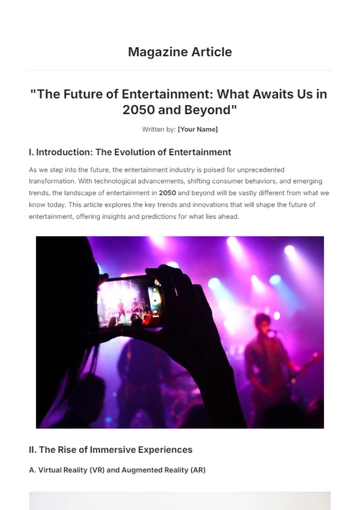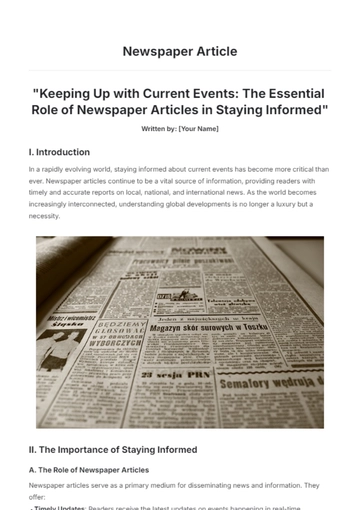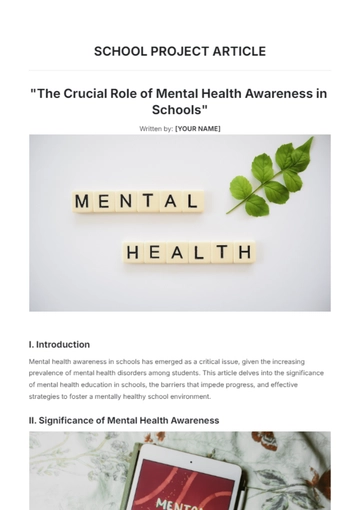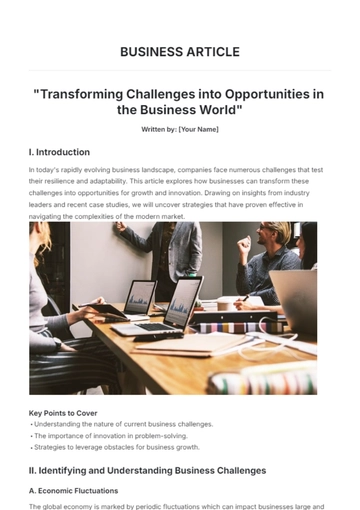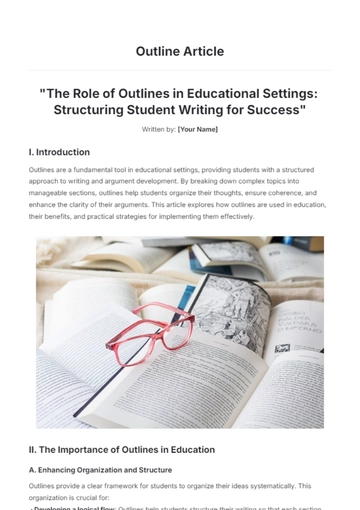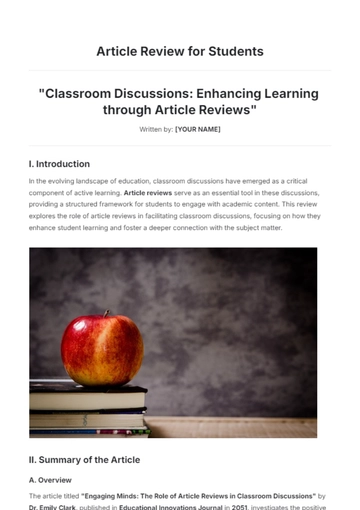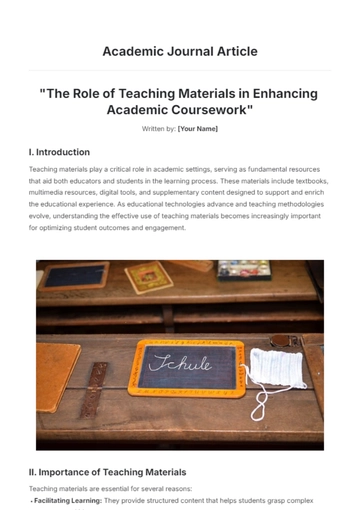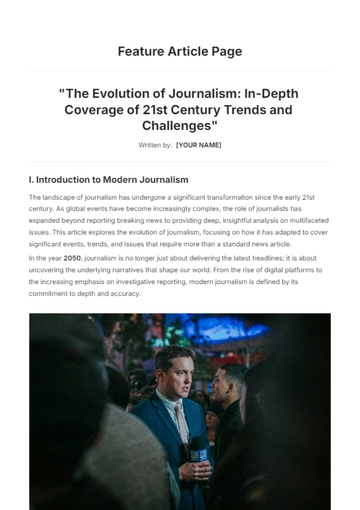Free Advocacy Article
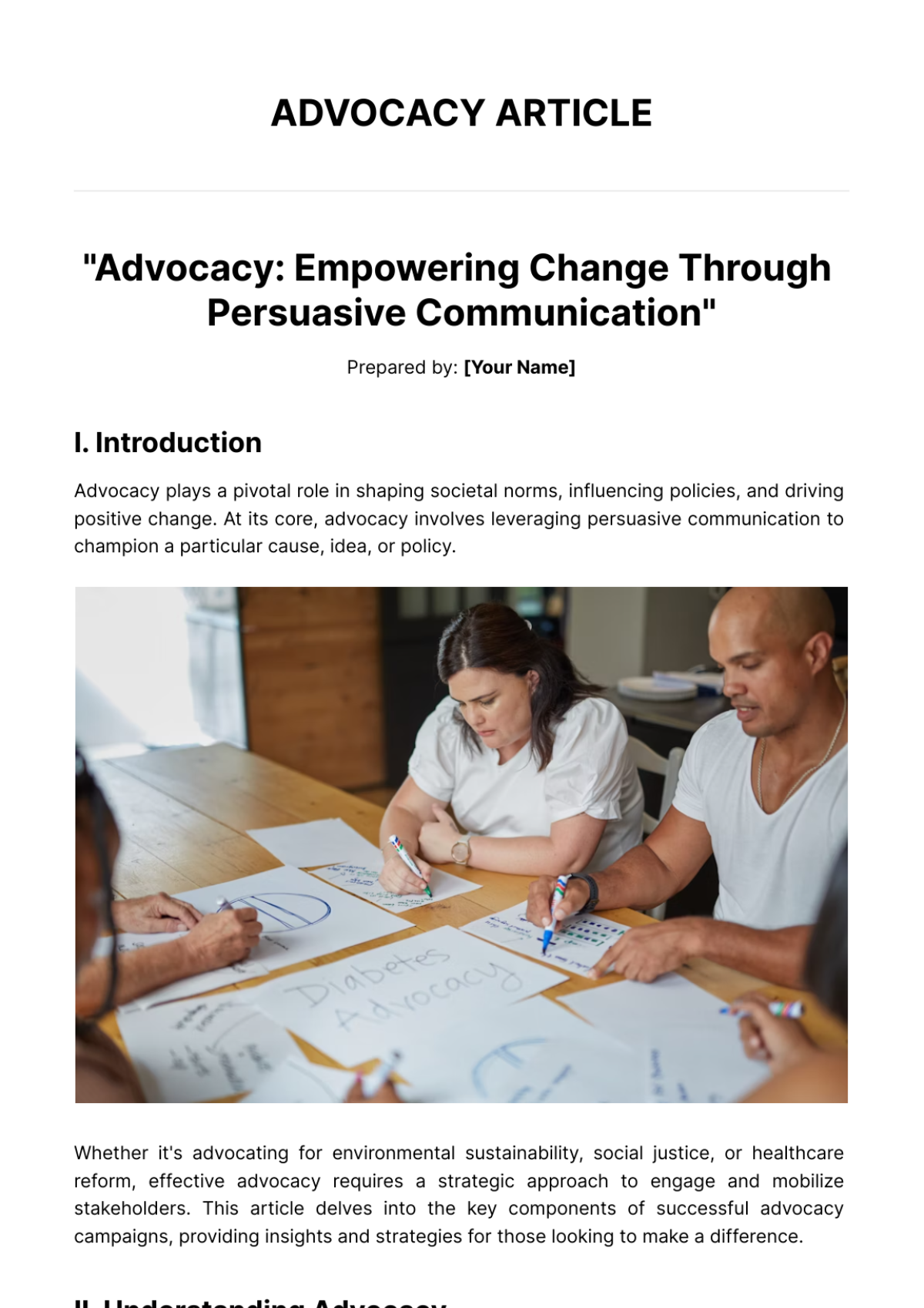
"Advocacy: Empowering Change Through Persuasive Communication"
Prepared by: [Your Name]
I. Introduction
Advocacy plays a pivotal role in shaping societal norms, influencing policies, and driving positive change. At its core, advocacy involves leveraging persuasive communication to champion a particular cause, idea, or policy.
Whether it's advocating for environmental sustainability, social justice, or healthcare reform, effective advocacy requires a strategic approach to engage and mobilize stakeholders. This article delves into the key components of successful advocacy campaigns, providing insights and strategies for those looking to make a difference.
II. Understanding Advocacy
Advocacy encompasses a diverse range of activities aimed at raising awareness, changing attitudes, and ultimately driving action. From grassroots movements to corporate lobbying efforts, advocacy takes many forms, each with its unique objectives and target audiences. Central to effective advocacy is the ability to articulate a compelling narrative that resonates with stakeholders and motivates them to support the cause. This often involves crafting persuasive messages backed by evidence, personal stories, and compelling visuals.

Key Elements of Advocacy:
Identifying Goals and Objectives: Clearly define the desired outcomes of the advocacy campaign, whether it's influencing public opinion, mobilizing grassroots support, or shaping policy decisions.
Target Audience Analysis: Understand the demographics, values, and interests of the audience you're trying to reach. Tailor your messaging and communication channels to resonate with their needs and priorities.
Building Coalitions: Collaboration with like-minded organizations and individuals can amplify the impact of advocacy efforts. Identify potential allies and stakeholders who share your goals and work together to advance the cause.
Strategic Messaging: Craft persuasive messages that communicate the urgency and importance of the issue while offering viable solutions. Use storytelling, data, and emotional appeals to connect with your audience on a deeper level.
45% of economically active people worldwide have been identified as some kind of advocate.
III. Implementing Effective Advocacy Strategies
Successful advocacy campaigns require careful planning, execution, and evaluation to maximize impact. Here are some proven strategies for implementing effective advocacy initiatives:
1. Grassroots Mobilization:
Community Engagement: Empower grassroots supporters to take action through rallies, petitions, letter-writing campaigns, and social media advocacy.
Volunteer Recruitment: Recruit and train volunteers to serve as advocates and ambassadors for the cause, expanding the reach and influence of the campaign.
2. Media Outreach:
Press Releases and Media Kits: Develop compelling press materials to attract media attention and secure coverage of key advocacy messages.
Op-Eds and Guest Articles: Position experts and advocates as thought leaders by submitting opinion pieces and guest articles to relevant publications.
3. Legislative Advocacy:
Policy Research and Analysis: Conduct thorough research on relevant policies and legislation, identifying opportunities for advocacy and areas for improvement.
Engagement with Decision-makers: Build relationships with policymakers, government officials, and legislative staff to advocate for policy changes and reforms.
"Education is the most powerful weapon which you can use to change the world.” —Nelson Mandela
IV. Measuring Impact and Driving Continuous Improvement
Evaluation is essential for assessing the effectiveness of advocacy efforts and refining strategies for future campaigns. By tracking key performance indicators and soliciting feedback from stakeholders, advocates can gauge their impact and make data-driven decisions. Some common metrics for measuring advocacy impact include:
Media Impressions: Monitor media coverage and social media engagement to quantify the reach and visibility of advocacy messages.
Policy Outcomes: Track legislative victories, policy changes, and other tangible outcomes resulting from advocacy efforts.
Community Engagement: Measure the level of grassroots support and engagement through metrics such as petition signatures, event attendance, and volunteer participation.
By continuously evaluating performance and adapting strategies based on insights gained, advocates can increase their effectiveness and drive meaningful change on the issues they care about.
60% of high-income household members are acting advocates. On the other hand, 42% of medium-income and 38% of low-income household members are advocates.
V. Challenges and Ethical Considerations in Advocacy
While advocacy can be a powerful force for positive change, it also comes with its own set of challenges and ethical considerations. Advocates must navigate complex political landscapes, competing interests, and potential conflicts of interest to maintain integrity and credibility. Some common challenges in advocacy include:

Ethical Dilemmas: Balancing the need to achieve advocacy goals with ethical principles such as transparency, honesty, and accountability.
Resource Constraints: Limited funding, staff capacity, and organizational resources can hinder the effectiveness of advocacy efforts.
Opposition and Resistance: Advocates may face pushback from vested interests, opposition groups, or policymakers reluctant to change.
Addressing these challenges requires careful planning, collaboration, and adherence to ethical standards to ensure that advocacy efforts are impactful and sustainable in the long run.
VI. Leveraging Technology and Innovation in Advocacy
In an increasingly digital world, technology and innovation play a crucial role in amplifying advocacy efforts and reaching broader audiences. From social media campaigns to data analytics tools, advocates have access to a wide range of technologies that can enhance their advocacy efforts. Some innovative approaches to advocacy include:

Social Media Advocacy: Harness the power of social media platforms to raise awareness, mobilize supporters, and engage with policymakers and influencers.
Data Visualization: Use data visualization tools to present complex information in a visually compelling way, making it easier for stakeholders to understand and act upon.
Digital Organizing Platforms: Utilize online platforms and tools for volunteer recruitment, event management, and fundraising to streamline advocacy operations and maximize impact.
By embracing technology and innovation, advocates can adapt to changing communication trends and leverage new opportunities to advance their causes more effectively.
VII. Conclusion
Advocacy is a powerful force for driving positive change in society. By effectively communicating their message, mobilizing stakeholders, and advocating for policy reforms, advocates can make a significant impact on the issues that matter most. Whether it's raising awareness, influencing public opinion, or shaping policy decisions, advocacy empowers individuals and organizations to be agents of change in their communities and beyond. With strategic planning, creative messaging, and collaborative action, advocates can build momentum and create a brighter future for all.
- 100% Customizable, free editor
- Access 1 Million+ Templates, photo’s & graphics
- Download or share as a template
- Click and replace photos, graphics, text, backgrounds
- Resize, crop, AI write & more
- Access advanced editor
Empower your advocacy efforts with Template.net's Advocacy Article Template. Crafted for impact, this customizable template offers editable sections to effortlessly tailor your message. Streamline your writing process and elevate your content with the AI Editor Tool, ensuring precision and professionalism. Create compelling advocacy articles that resonate with your audience and drive meaningful change.










